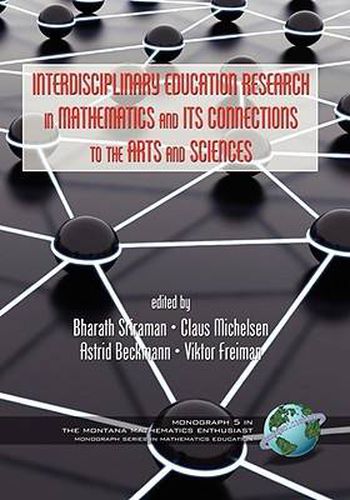Readings Newsletter
Become a Readings Member to make your shopping experience even easier.
Sign in or sign up for free!
You’re not far away from qualifying for FREE standard shipping within Australia
You’ve qualified for FREE standard shipping within Australia
The cart is loading…






This title is printed to order. This book may have been self-published. If so, we cannot guarantee the quality of the content. In the main most books will have gone through the editing process however some may not. We therefore suggest that you be aware of this before ordering this book. If in doubt check either the author or publisher’s details as we are unable to accept any returns unless they are faulty. Please contact us if you have any questions.
The book is based on the recently held Symposium on mathematics and its connections to the arts and sciences, namely the second Mathematics and its Connections to the Arts and Sciences (MACAS2)Symposium in Odense, Denmark (May 29-31, 2007). The chapters are an eclectic collection of interdisciplinary research initiatives undertaken by mathematics educators with implications for practitioners concerned with teaching and learning processes. The papers cover a wide genre of research domains within mathematics education (cognition, modelling, problem solving, teacher education, ethnomathematics, mathematical/statistical literacy, curricular and technological initiatives and research related to science education). The major interdisciplinary themes of the papers in this book are: 1. How can modelling activities be used to foster interdisciplinary projects in the school and university setting? 2. How can the intricate connections between mathematics and physics be used to design and research interdisciplinary activities in schools and the university? 3.How can research within the ethnomathematics domain of mathematics education be linked to critical mathematics education and interdisciplinary projects involving mathematics, art and culture? 4. How can the push for mathematical and statistical literacy be connected to other subjects in the school curricula and emphasized via interdisciplinary activities? 5. What are concrete examples of classroom experiments with empirical data that demonstrate new and unusual connections/relations between mathematics, arts and the sciences with implications for pedagogy? 6. What is the role of technology and new ICT interfaces in linking communities of learners in interdisciplinary activities involving problem solving? The book is an important contribution to the literature on educational initiatives in interdisciplinary education increasing vital for emerging professions of the 21st century.
$9.00 standard shipping within Australia
FREE standard shipping within Australia for orders over $100.00
Express & International shipping calculated at checkout
This title is printed to order. This book may have been self-published. If so, we cannot guarantee the quality of the content. In the main most books will have gone through the editing process however some may not. We therefore suggest that you be aware of this before ordering this book. If in doubt check either the author or publisher’s details as we are unable to accept any returns unless they are faulty. Please contact us if you have any questions.
The book is based on the recently held Symposium on mathematics and its connections to the arts and sciences, namely the second Mathematics and its Connections to the Arts and Sciences (MACAS2)Symposium in Odense, Denmark (May 29-31, 2007). The chapters are an eclectic collection of interdisciplinary research initiatives undertaken by mathematics educators with implications for practitioners concerned with teaching and learning processes. The papers cover a wide genre of research domains within mathematics education (cognition, modelling, problem solving, teacher education, ethnomathematics, mathematical/statistical literacy, curricular and technological initiatives and research related to science education). The major interdisciplinary themes of the papers in this book are: 1. How can modelling activities be used to foster interdisciplinary projects in the school and university setting? 2. How can the intricate connections between mathematics and physics be used to design and research interdisciplinary activities in schools and the university? 3.How can research within the ethnomathematics domain of mathematics education be linked to critical mathematics education and interdisciplinary projects involving mathematics, art and culture? 4. How can the push for mathematical and statistical literacy be connected to other subjects in the school curricula and emphasized via interdisciplinary activities? 5. What are concrete examples of classroom experiments with empirical data that demonstrate new and unusual connections/relations between mathematics, arts and the sciences with implications for pedagogy? 6. What is the role of technology and new ICT interfaces in linking communities of learners in interdisciplinary activities involving problem solving? The book is an important contribution to the literature on educational initiatives in interdisciplinary education increasing vital for emerging professions of the 21st century.